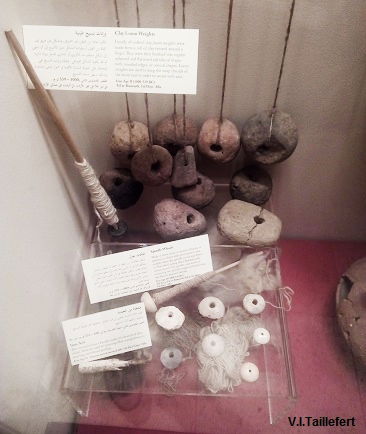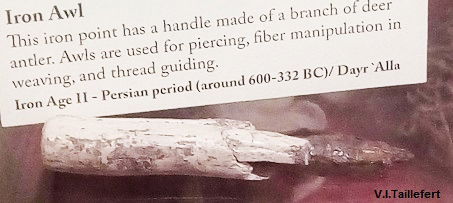Weaving
 | Wool weaving is an essential element of the ancestral Bedouin heritage, not only in Jordan but in the whole Middle East and Arabic Peninsula. Rugs, pillows, bedding furniture, bags, belts but also the shelter, called the "hair house" (Ar. beit es-shar), bridles, ropes and saddle blankets for the camels, horses and donkeys... It is therefore many aspects of the everyday Bedouin life that depend on the weaving production. |
Although a physically very demanding activity, weaving is the prerogative of women. Speaking about weaving is speaking about women, about their central role in the familial sphere, their artistic skills and their perseverance...
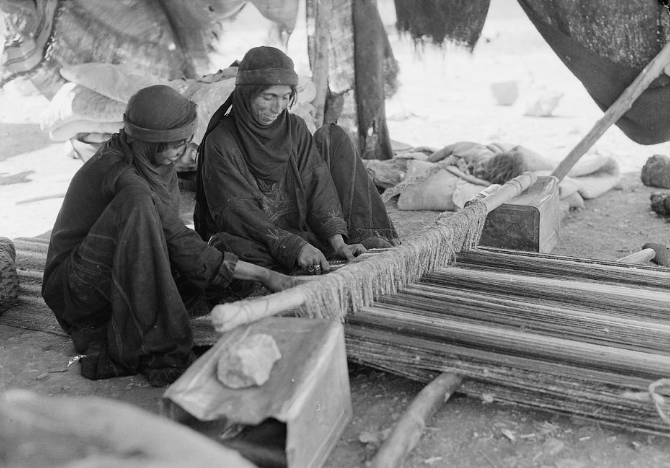 www.picryl.com | 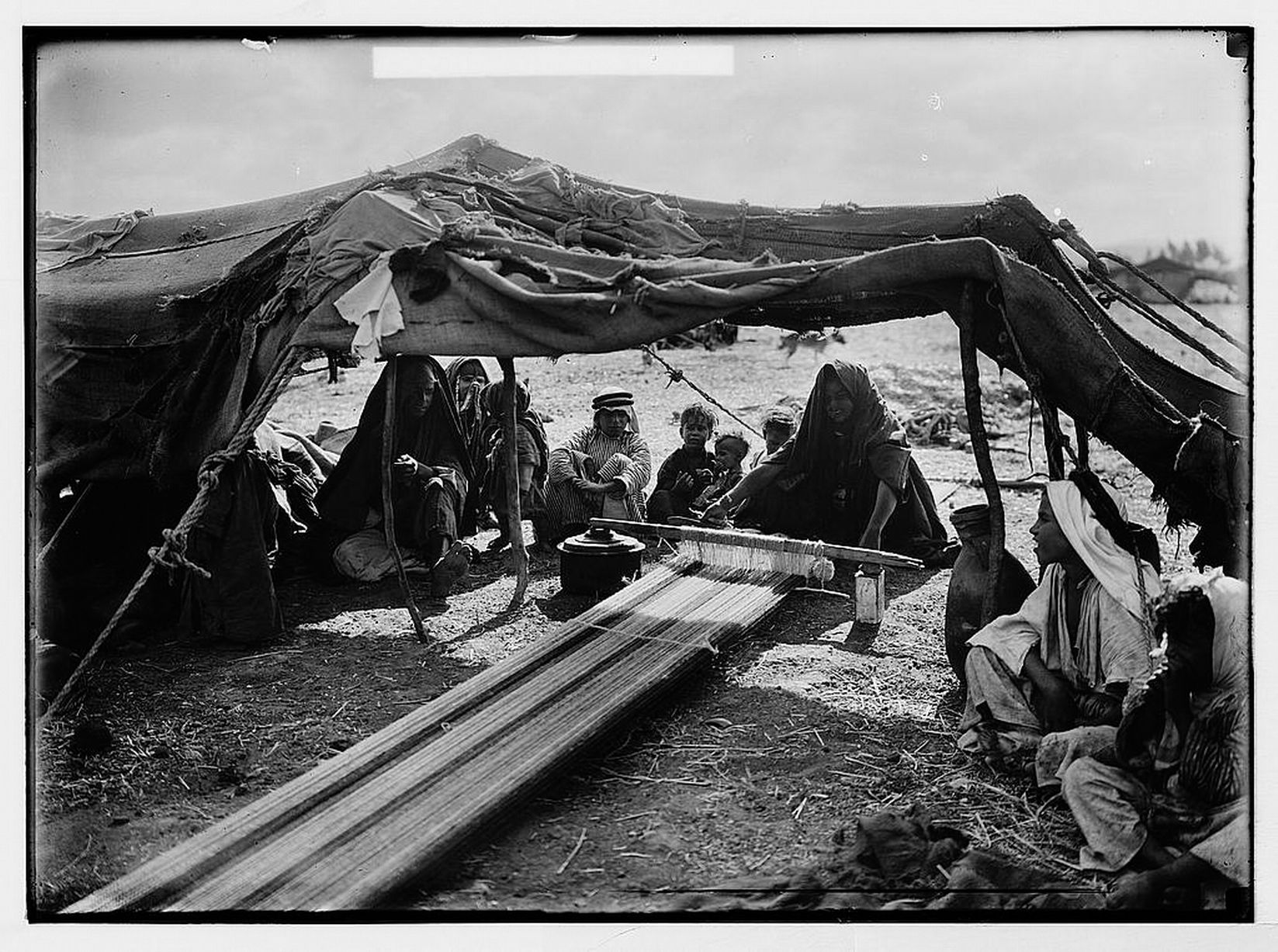 www.mirror.co.uk |
The traditional weaving activity requires mutual assistance, solidarity and social cohesion. Weaving the long strips of a tent or even smaller pieces is impossible to be worked out individually. Even building the ground loom request the coordination of at least three individuals. Under the trend to sedentarization, the lifestyle modification and the fracturing of the Bedouin society to cellular familial groups, traditional weaving is threatened of total disappearance. This is the reason why some projects have been created for its survival. The pieces produced in the frame of those projects are then tourism-oriented: small rugs, bags, belts... The material for the nowadays Bedouin tents is no more produced locally but imported from outside of Jordan, till recently from Syria, but rather now from Turkey or from Saudi Arabia. Moreover, a goat hair tent is very expensive and many Bedouin families can not afford such expenses anymore. In this case, they live under tents made of jute and plastic sheeting. The row material of a traditional Bedouin tent is the goat hair, that has the particularity to swell under water. After the first rains, the tent become waterproofed. Goat hair is rough. Sheep and camel wool is rather used for home smaller items, as it is softer than goat hair. Before the importation of chemical dying colors, only natural dyes were used. Jordan even used to export natural dyes to neighbouring country in the past. Indigo, that was cultivated in South Dead Sea region at least since the Mameluke period, was very commonly used to produce bluish to dark shades. Sumaq berries was producing the red, a yellow soil called mugha was treated to produce yellow dye and from the kermes insect were extracted the purple or crimson colours. Other home products could complete the colors range, as the pomegranate and onion peel, flowers and tree bark, spices like curcuma. Natural products additives as vinegar, salt, alum has the particularity to intensify the dying and make it resistant. | 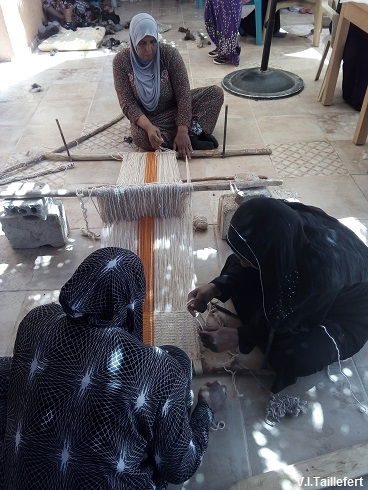 |
After having been beaten and cleaned of its impurities, the wool or goat hair is spun with a maghzal, a wooden stick ending in cross in which a hock is fixed. The woman rolls the maghzal along her leg. Maghazal are already found in the archaeological records of the Iron Age (photo below exp. Jordan Museum)
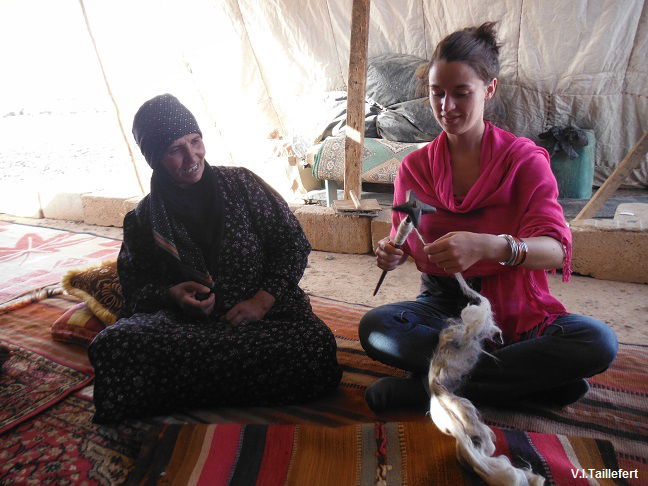 |
 | We can find two types of looms in Jordan. The vertical loom belongs to the sedentary urban society and is mostly operated by men (right photo at the Irak Al Amir Woomen Cooperative). This loom allow weaving relatively small items as rugs, cushions and bags. It also allows to produce finer textiles. We can till see examples in Madaba workshops, in Jerash and Irbid. In the archaeological records of the Iron Age II, we also find a vertical loom. At Tell Deir Alla', in the Jordan Valley, archaeologist found, among other wool working tools, a group of clay loom weights. The wrap-weighted loom technique traveled from Switzerland and Central Europe to the Levant at the Early Bronze Age. |  | ||
|
The Bedouin ground loom is much more common in the Jordanian heritage. It is perfectly adapted to the nomadic lifestyle as it is removable. It is made from simple tools found in the immediate home environment: stones, wooden sticks and a wooden batten.
 Tiraz & Alaydi centers exhibition, ref. below
Tiraz & Alaydi centers exhibition, ref. below
 | The front and back beams are maintained with stakes positioned in the ground. Long threads are extended in between in order to form the warp. This operation requests the cooperation of several women. For weaving, the warp threads alternation is worked manually by selecting and pulling up the thread. This operation requests strength and is hard to hands, especially if using goat hair which is particularly rough. |  |
 | A gazelle horn is traditionally used for packing the threads of the weft. This tool is essential to obtain a weave of good quality and women prized it very much, so that it was transmitted from mother to daughter. However, nowadays, it is mostly a metal hock that is used. In the excavations of Tell Deir Alla' was found a iron awl fixed to a handle made of deer antler, dating back to the Persian period.
| |
The basic designs are the same all over Jordan and belong to a common heritage. They are geometrical shapes, stripes, triangles, zigzags and crow-steps, a typically oriental motif we can also see on the Nabataean facades. However, we find local and tribal variations regarding the pattern combinations, the shades, the size of rugs and some details as the fringes.
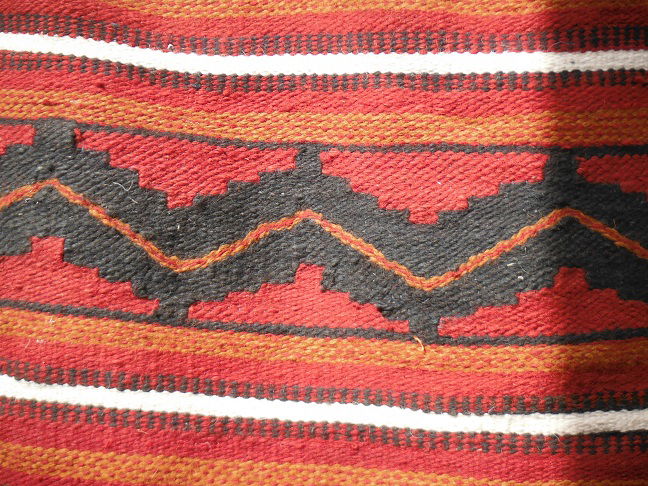 |
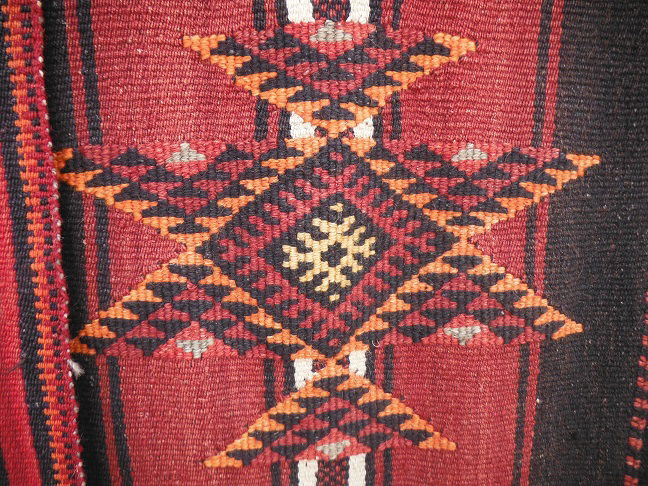 | 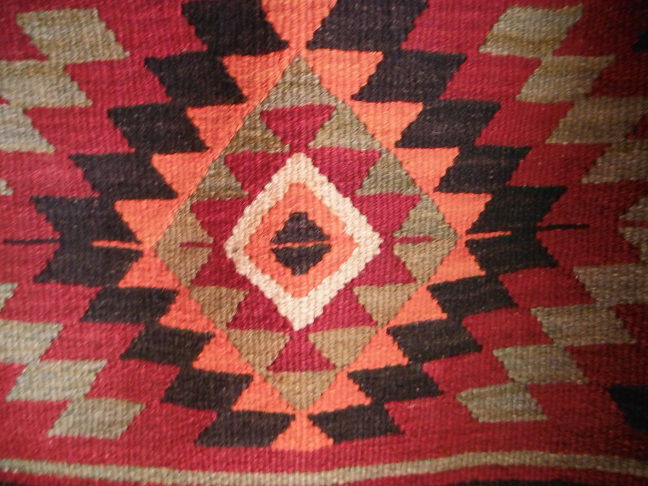 |
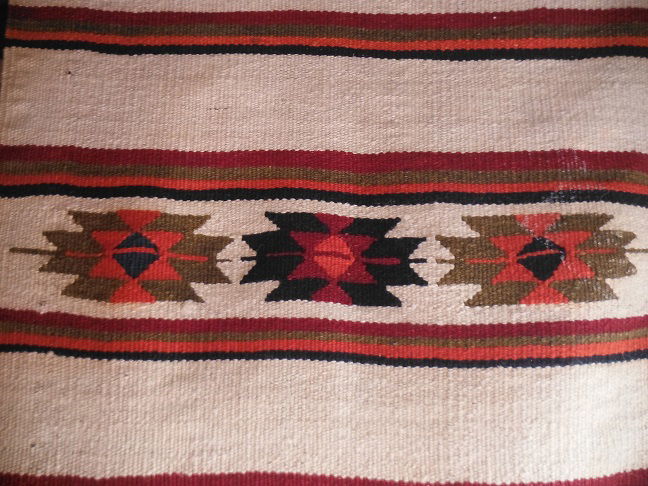 |
Some motifs discretely integrated inside the general design indicate the belonging to a family or a tribe.
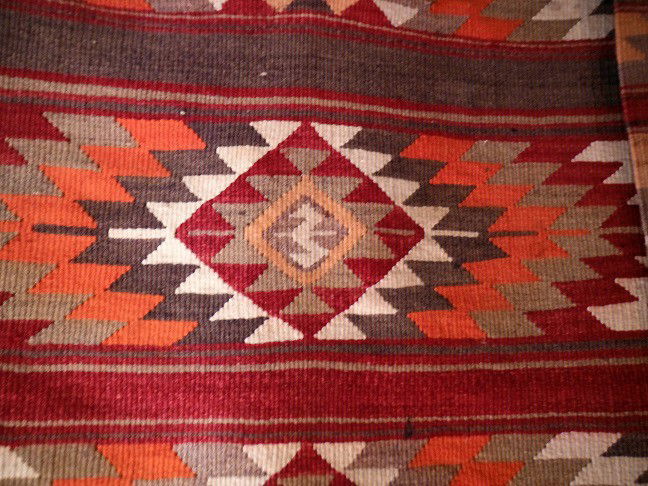 | 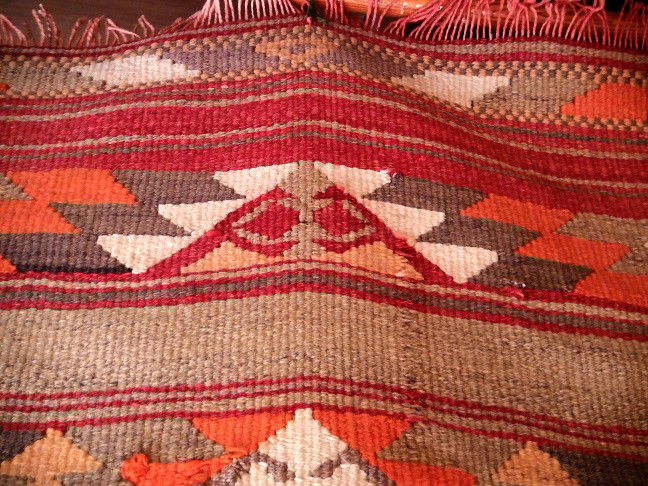 |  |
The adaptation to tourism market opened this art to some innovations...
 | 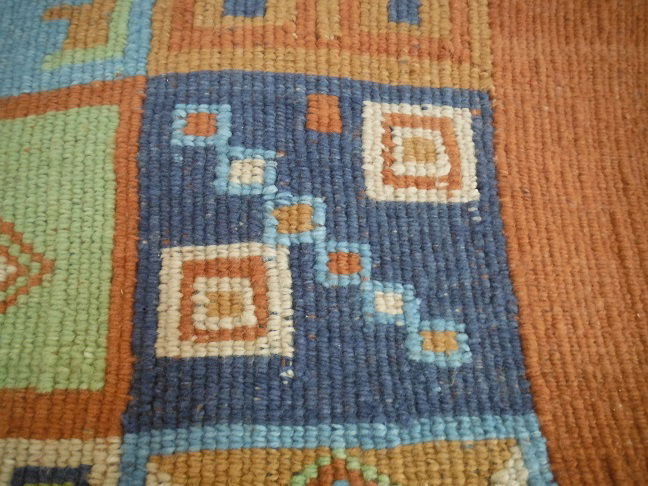 |
 | In 2013, we organized in cooperation with a Bedouin woman in Azraq a weaving experiment for two students, consisting in the weaving of a small rug, with all the steps from the building of the ground loom till the finishing. We simplified the process by buying the coloured wool balls. We also brought some carded wool for the maghzal training... we decided to waive reproducing traditional patterns and just targeted a piece with colorful strips. The experiment showed how the traditional weaving work is demanding in time, technical abilities and physical strength. The position of the weaver is particularly strenuous. Moreover, pulling up the threads causes tension in the arms and the back. It is exceptional to meet a Bedouin woman who still practices this activity for her own needs. Beside the modifications in the Bedouin society and in their lifestyle, the arduousness of the work is another cause of its disappearance. | ||
 | 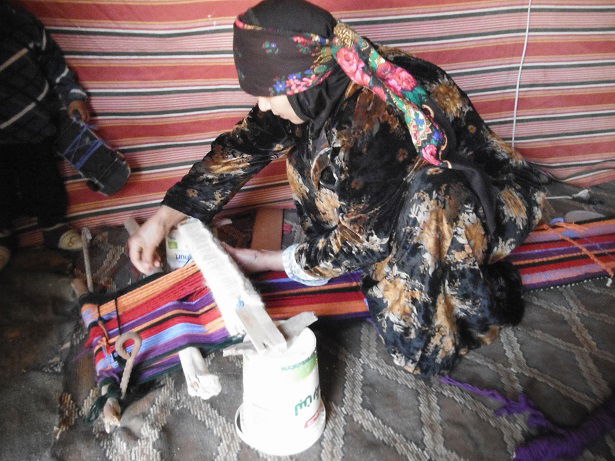 |  | |
References:
Tiraz & Alaydi centers: Woven, The Art of Traditional Weavings in Jordan Exhibition 2018, Amman.
Joy May Hilden : https://digitalcommons.unl.edu/cgi/viewcontent.cgi?article=1485&context=tsaconf
Jeannette Boertian: https://www.academia.edu/34123523/Unravelling_the_Fabric._Textile_production_in_Iron_Age_Transjordan._PhD_dissertation_University_of_Groningen._E-Book

